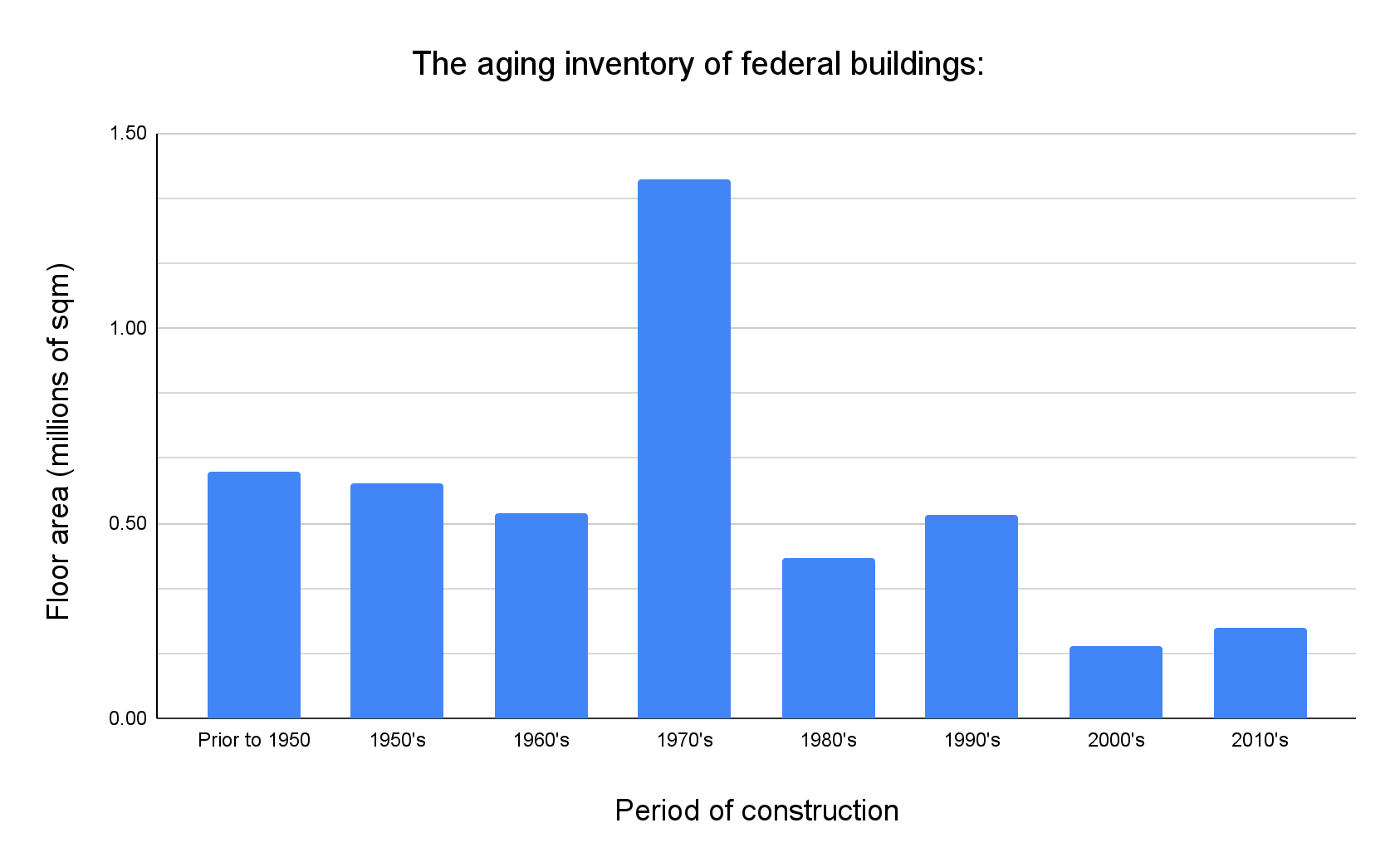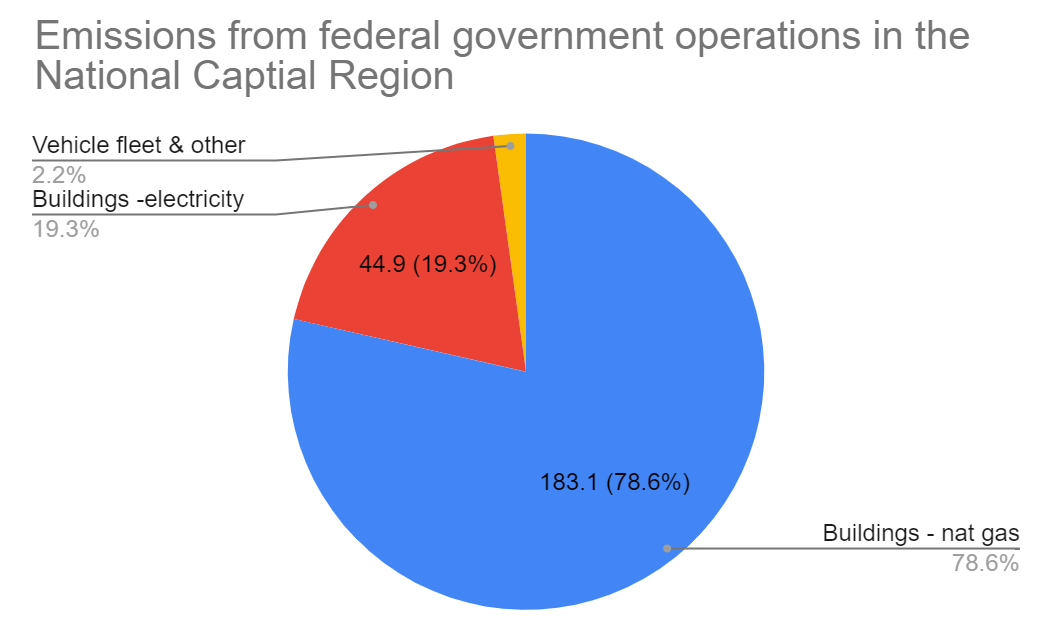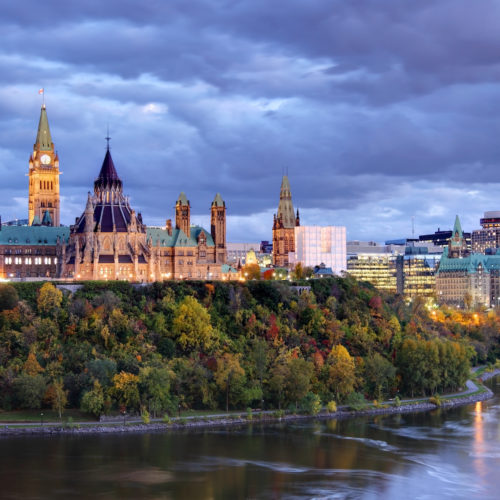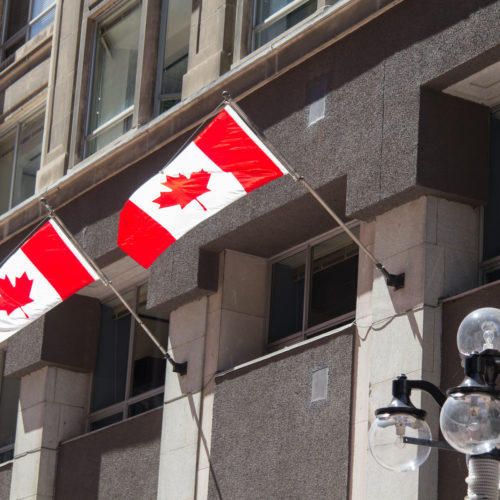Aerial view of the Ottawa, winter, snow

Aging Buildings and the Climate Emergency: Opportunity Knocks!
Great opportunities arise when several trends converge in a way that creates possibilities that would otherwise not exist. Three trends are converging right now that are creating a win-win opportunity for buildings and the environment. These trends are:
- the aging stock of commercial and institutional buildings in need of capital reinvestment,
- the growing urgency of reducing greenhouse gas emissions, and
- the remarkable advancement in recent years of the design approaches and technologies available for building energy efficiency and electrification.
A look at the Canadian government’s portfolio of buildings in the nation’s capital illustrates the opportunity. The majority of the 2,200 government buildings in the Ottawa area are over four decades old—a fairly typical age profile for commercial and institutional buildings generally.
An analysis of this portfolio by SSG, whatIf? Technologies, and RMI found that strategic investments, driven by these converging trends, can turn aging buildings in need of maintenance into low-carbon buildings of the future. Wrapping strategic energy efficiency retrofits, renewable energy, and district energy systems into planned upgrades offers a historic opportunity for climate action and renewal.
Trend #1: Federal Buildings Are Old
The age profile of federal buildings in the Ottawa area typifies much of the commercial and institutional building stock throughout North America. Fully 70 percent of the portfolio is over 40 years old. In fact, more floor space was added in the 1970s than in all the decades since.
These buildings are due for renewal. Indeed, budget pressures have resulted in inadequate maintenance investments over the years, and over 40 percent of the federal building inventory is in poor or critical condition. Another 22 percent is in fair condition. Even for those buildings kept in reasonable condition, advancements in building science and technology have rendered critical systems obsolete. Their interior designs and layouts are misaligned with the needs of a modern office working environment and the much greater role of advanced information technologies in the delivery of government services in the 21st century.
Trend #2: The Government Is Committed to Eliminating Greenhouse Gas Emissions
The Canadian government is committed to reducing greenhouse gas emissions from its own operations by 80 percent from 2005 levels by 2050. If the Canadian government adopts the carbon budget under consideration, it will have an even more challenging target: zero emissions by the mid 2030s.
In the National Capital Region (NCR), 98 percent of emissions from the government’s operations come from building energy use—mostly natural gas for heating. Therefore, the emissions reduction commitment translates directly into a target to virtually eliminate natural gas consumption. To meet the emissions reduction commitment, the impending recapitalization of federal real estate in the NCR must transform the buildings into high-efficiency, high-performance spaces with zero or very low emissions, including the emissions associated with their electricity use.
Trend #3: Building Science and Technology Has Advanced Greatly
The science, engineering, and related technologies that are being applied in buildings today would be hardly recognizable to a visitor from the 1970s. Most of the federal building stock in the NCR predates the invention of the personal computer, never mind the advanced digital sensor and control technologies that now help buildings perform efficiently and comfortably. Ironically, the backlog of deferred maintenance of the federal building stock could actually be advantageous: the government can leapfrog intermediate generations of technology with retrofits to create the low-carbon buildings of the future.
A tsunami of technological innovation has swept through the buildings sector in recent years. This includes LED lighting systems, high performance windows, air-to-air cold climate heat pumps, electronically commutated high efficiency fan and pump motors, advanced energy flywheels, and other heat recovery technologies. When combined with deep cost reductions in sensors and digitized control technologies, the recapitalization of old buildings can create healthier, more productive space that no longer relies on antiquated fossil fuel combustion technologies.
Electrification is the key to efficiency, including by switching current electric resistance heating to heat pump technology. Modern, electric-powered technologies are dramatically more efficient than their predecessors or their combustion-based alternatives. In a deep building retrofit, these efficiency gains can drive reductions in power consumption that are sometimes larger than the additional electricity required to switch from natural gas to heat pumps. By combining building energy efficiency and electrification, the decarbonization of commercial and institutional buildings can facilitate grid decarbonization.
The Opportunity: Better Buildings and Zero Emissions through Modernization
SSG and RMI’s Roadmap to Low-Carbon Operations in the National Capital Region illustrates a classic example of the whole being greater than the sum of the parts. The Roadmap shows how an integrated, whole-building approach to the renewal of federal buildings can result in better buildings that are fossil fuel-free and have lower aggregate electricity consumption than they do today.
While the mix of technologies and the energy and emissions outcomes vary from one building to the next, we found that aggregate electricity consumption could be reduced by 25 percent or more, even as the gas-heated stock is electrified. This is the opportunity created by the convergence of an aging stock, a climate change imperative, and a new generation of building technologies that have transformed the art of the possible.
The Roadmap shows how the government’s offices can be replaced with dynamic spaces and flexible work arrangements that make its employees healthier and happier. It is a blueprint for creating spaces with better ventilation and temperature controls, all of which enhance focus, productivity, and efficiency.
By choosing the path of carbon neutrality, the Canadian government can become a model. It can show all kinds of organizations—from municipal governments to large corporations to other countries—that addressing the climate crisis is about so much more than reducing greenhouse gas emissions. It is an opportunity to build vibrant, healthy, and resilient communities. It is a chance to step onto the best path for our future.



